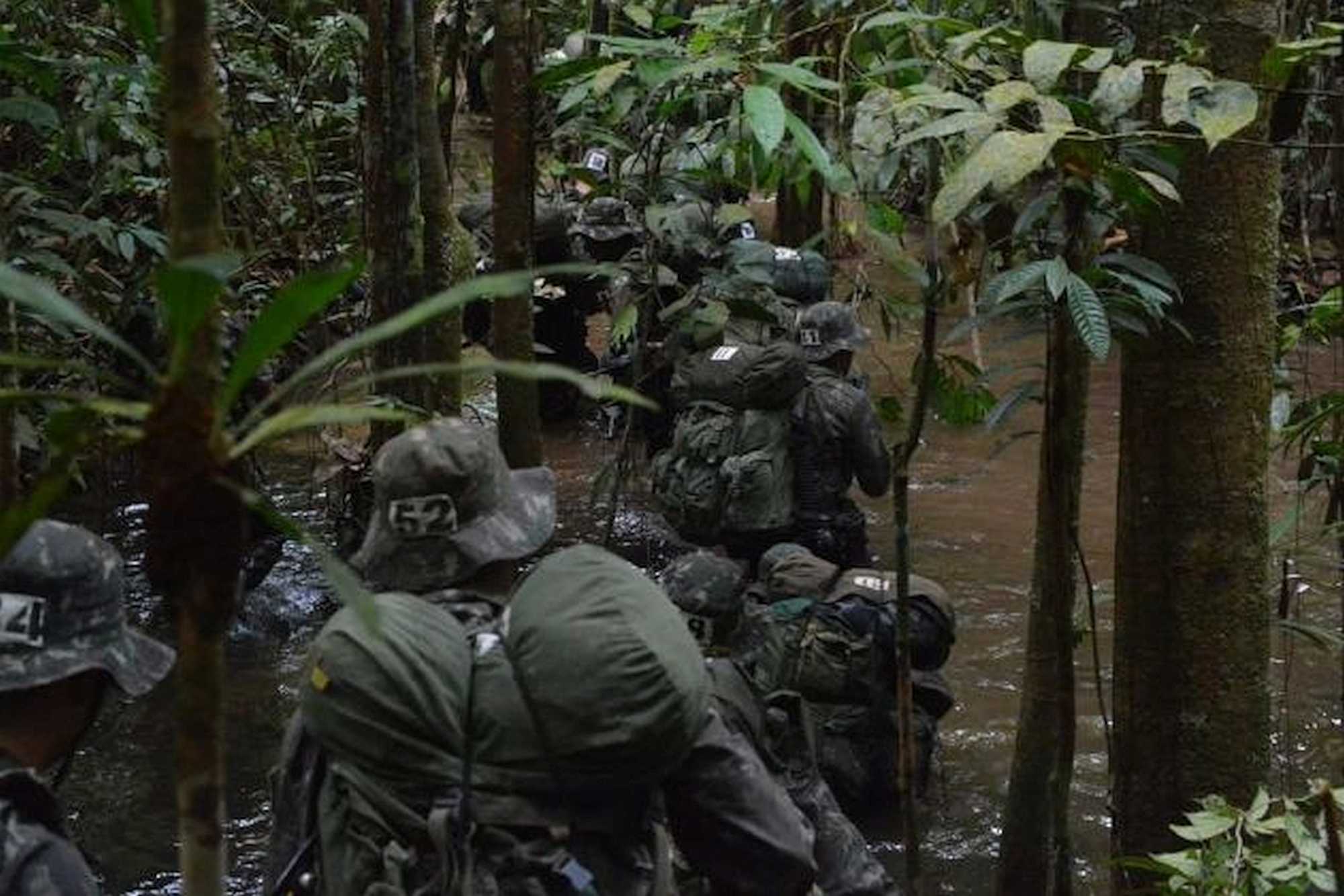On September 20th, 86 students in the Jungle Operations Course (COS, per its Portuguese acronym) finally earned the diploma that certifies them as “jungle warriors.”
The graduation took place at the Jungle Warfare Training Center (CIGS, per its Portuguese acronym) in Manaus, following 10 weeks of activities. This group of warriors included members of the Brazilian Armed Forces, Military Police professionals, and even partner nation service members.
Known for the rigorous requirements the course places on its students, there were 115 service members registered when it began on July 10th. The daily difficulties faced over the length of the course were the cause of these dropouts.
“We had a success rate of 73 percent in this edition of the course. That was a very good average,” Brazilian Army (EB, per its Portuguese acronym) Lieutenant Colonel Alexandre Amorim de Andrade, the chief of the Training Division at CIGS, said. “That rate has been going up because trainee selection has been getting better,” he acknowledged.
COS takes place twice a year: once in the first semester and again in the second. Only members of the military serving in units based in the Amazon jungle may apply, but foreign service members from nations with which Brazil maintains friendly relations may also apply.
To do so, they undergo physical tests in swimming, running, rope climbing, and obstacle courses at their home duty stations.
Later, they undergo medical testing at CIGS headquarters and repeat the same tests as before while also being tested on their military knowledge one week before the start of the course.
Once accepted, they each remove their name, rank, and badge from their uniforms. In place of those items, they each get a hat with a numbered white card on it. Over the next two and a half months, their number will be their new name.
“This is to show that all of the students are the same. There isn’t any hierarchy among the students,” EB Captain Rafael Cristofari, who was first in his class and serves as an operations officer for the Amapá Border Command and the 34th Jungle Infantry Battalion, stated.
Attrition
Lt. Col. Amorim said that the voluntary withdrawals were due to some service members’ physical limitations and their technical limitations as well. Others stopped due to emotional issues, such as homesickness, and there was one student who was unable to continue because he broke his collarbone and could no longer carry his rucksack.
There was yet a third reason: lack of technical success. “To measure success, ongoing assessments are made throughout the course. So, the soldier has to meet a minimum standard of expectations relating to their jungle warfare abilities.
If they don’t meet that standard, they may be dropped,” Lt. Col. Amorim added. That decision is made after the matter has been discussed by the course’s teacher council.
Capt. Cristofari said that he had been determined to make it through to the end of the course. The thought of dropping out never crossed his mind.
Instead, for him, the hardest thing to overcome wasn’t the exhausting activities or the lack of sleep but being away from his family. “That’s what weighs most on you, especially for service members who are married with children,” the jungle warrior confessed.
During the 10-week training, COS students can have contact with the outside only by phone during their recess periods, which occur during the transitions from one phase of the course to another.
The recess periods vary from 12 to 36 hours and mainly serve as time for service members to wash their uniforms and maintain their gear. After the activities have finished, the instructors also allow for shorter breaks of up to 24 hours, when needed.
From Simple to Complex
COS training is structured in three phases. The first is called Life in the Jungle and lasts a week and a half, during which time the student is introduced to the main features of the Amazon environment. The goal of this initial stage is to develop jungle survival skills.
Next comes the Special Techniques phase. For two and a half weeks, the students learn techniques, tactics, and procedures linked to orienteering, swimming, and firing, which are the skills needed for carrying out a jungle operation.
“The swimming part is very important because, in the Amazon, the troops travel extensively along rivers,” Capt. Cristofari underscored.
Orienteering is the ability to locate oneself and move from point to point, taking into account the special characteristics of the jungle where there are no clear points of reference, which requires the student to rely on the aid of a map and a compass.
In the jungle, the distance from which you can locate a target is much closer than in other environments, Capt. Cristofari said. “In an environment like a desert forest, for example, the troops are able to see a target 500 meters away. In the jungle, it’s all covered in vegetation, and the troops are only able to see targets up to about 20 meters away,” he explained.
Thus, these characteristics are worked on with the students so that they can learn how to use their weaponry in the best way.
The culmination of the course is in the third phase, which is focused on conducting six weeks of operations. It begins with simpler training events related to reconnaissance patrols and then advances to more complex missions, covering all those that are in the curriculum for the Amazon region, especially on stretches of the border. “These are mock situations that the students will later experience when they return to their squads,” Lt. Col. Amorim stated.
International Interest
COS has developed a good reputation abroad, and, for many years, CIGS has been receiving foreign service members who train together with the Brazilians. Meanwhile, a training geared exclusively to foreigners was created in 2016: the International Jungle Operations Traineeship.
Now, the traineeship is being renamed the International Jungle Operations Course (CIOS, per its Portuguese acronym) and runs for five weeks, from October 9th to November 17th, instead of four, as in 2016.
Lt. Col. Amorim said that the Amazon Military Command has invited 35 nations to participate in CIOS. The United States and Peru have already confirmed that they have sent service members there.
This article appeared originally in Diálogo – https://dialogo-americas.com/en/home














